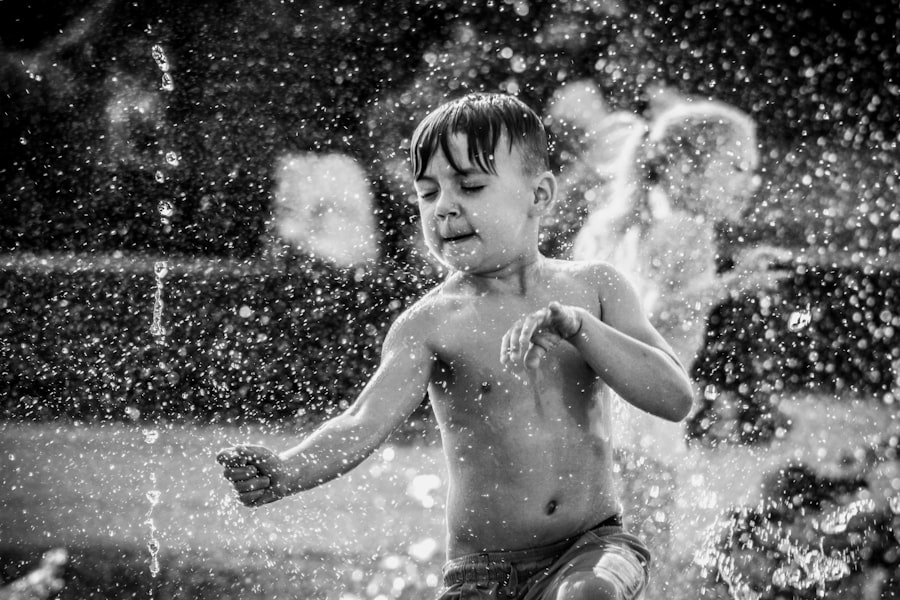
Wait! Don’t Go Yet! 👋
We see you eyeing those adorable outfits! 😍 Before you leave, here’s 10% OFF your first order!
Hurry, your little one’s next favorite outfit is waiting! 🛍️✨

We see you eyeing those adorable outfits! 😍 Before you leave, here’s 10% OFF your first order!
Hurry, your little one’s next favorite outfit is waiting! 🛍️✨
The world of science is a vast and fascinating realm, filled with mysteries waiting to be unraveled.
Toddler science experiments serve as a gateway to this exploration, allowing young children to engage with fundamental scientific concepts in a hands-on manner.
These experiments are not only entertaining but also educational, providing a platform for toddlers to learn through play. By introducing simple scientific principles through engaging activities, caregivers can foster a love for learning that may last a lifetime. Engaging toddlers in science experiments can take many forms, from observing the behavior of simple materials to exploring the properties of water and air.
The beauty of these activities lies in their simplicity; they often require minimal materials and can be conducted in the comfort of home or outdoors. As toddlers experiment, they develop critical thinking skills, enhance their sensory experiences, and begin to understand cause-and-effect relationships. This early exposure to science not only nurtures their curiosity but also lays the groundwork for future academic pursuits in STEM (Science, Technology, Engineering, and Mathematics) fields.
By integrating STEM into their daily routines, caregivers can help toddlers build a strong intellectual framework that supports lifelong learning. Moreover, STEM activities promote social skills as toddlers often work alongside peers or family members during experiments.
Collaborative projects encourage communication, teamwork, and sharing of ideas, which are essential skills for future academic and social success. For instance, when toddlers work together to build a simple structure using blocks or conduct a basic experiment with water and food coloring, they learn to express their thoughts and listen to others.
This interaction not only enhances their understanding of scientific concepts but also fosters emotional intelligence and resilience as they navigate challenges together.

When it comes to conducting science experiments with toddlers, simplicity and safety are paramount. One popular experiment involves creating a homemade volcano using baking soda and vinegar. This classic activity captivates young minds as they witness the fizzy eruption that occurs when the two substances react.
To set up this experiment, caregivers can use a small container or cup filled with baking soda, then pour vinegar over it while encouraging toddlers to observe the bubbling reaction.
Another engaging experiment is the exploration of density through a colorful liquid layering activity.
By using various liquids such as water, oil, and syrup, caregivers can demonstrate how different substances have different densities. Toddlers can help pour the liquids into a clear container in a specific order, watching as they form distinct layers. This experiment not only teaches about density but also allows toddlers to practice fine motor skills as they pour and measure liquids.
Both of these experiments are safe and require minimal supervision, making them ideal for young children eager to explore scientific concepts.
The materials required for toddler science experiments are often common household items that are both safe and easily accessible. For instance, basic kitchen supplies such as baking soda, vinegar, food coloring, and various liquids like water and oil can be used for numerous experiments. These items not only serve as the foundation for many engaging activities but also allow caregivers to incorporate everyday objects into the learning process.
By utilizing materials that are already available at home, caregivers can encourage spontaneous exploration without the need for elaborate setups. In addition to kitchen supplies, other materials such as paper towels, plastic cups, balloons, and craft items like straws or popsicle sticks can enhance the experimentation experience. For example, using balloons in conjunction with baking soda and vinegar can create an exciting demonstration of gas production when the balloon inflates from the carbon dioxide released during the reaction.
Similarly, straws can be used in engineering challenges where toddlers design structures or create simple machines. The versatility of these materials allows for endless possibilities in toddler science experiments while ensuring safety and ease of use.
Engaging toddlers in science experiments offers a multitude of benefits that extend beyond mere entertainment. One significant advantage is the enhancement of sensory development. Many science experiments involve tactile experiences—such as mixing colors or feeling different textures—that stimulate a toddler’s senses.
This sensory engagement is crucial for cognitive development as it helps children make connections between what they see, feel, and understand about their environment. Additionally, participating in science experiments fosters independence and confidence in toddlers. As they explore new concepts and successfully complete tasks, they gain a sense of accomplishment that boosts their self-esteem.
For instance, when a toddler successfully creates a colorful lava lamp using oil and water, they experience pride in their ability to conduct an experiment independently. This newfound confidence encourages them to take on more complex challenges in the future, reinforcing a growth mindset that is essential for lifelong learning.

One essential tip is to keep instructions simple and clear. Toddlers thrive on routine and familiarity; therefore, breaking down each step into manageable parts helps them understand what is expected without feeling overwhelmed.
Using visual aids or demonstrations can also enhance comprehension and engagement. This approach helps toddlers to better understand the experiment and its objectives.
Another important aspect is to create an environment that encourages exploration without fear of making mistakes. Caregivers should emphasize that experimentation is about discovery rather than achieving perfect results. For example, if an experiment does not go as planned, encourage toddlers to discuss what they observed and what might have gone wrong. This approach not only promotes critical thinking but also teaches resilience in the face of challenges.
Beyond traditional science experiments, there are numerous fun and educational STEM activities that can captivate toddlers’ imaginations while reinforcing scientific concepts. One such activity is nature scavenger hunts where toddlers explore their surroundings to find specific items like leaves, rocks, or flowers. This activity encourages observation skills and introduces basic biology concepts related to plants and animals.
Another engaging activity is building simple structures using blocks or recycled materials like cardboard boxes or plastic bottles. This engineering-focused task allows toddlers to experiment with balance and stability while fostering creativity as they design their structures. Caregivers can challenge toddlers by asking them to build something specific—like a bridge or tower—encouraging them to think critically about how to achieve their goals while having fun.
Encouraging curiosity and exploration in toddlers through science experiments is an invaluable investment in their development. By providing opportunities for hands-on learning experiences that stimulate their natural inquisitiveness, caregivers can help shape young minds into lifelong learners who embrace challenges with enthusiasm. The combination of simple materials, engaging activities, and supportive guidance creates an environment where toddlers feel empowered to explore scientific concepts at their own pace.
As toddlers engage with science through play-based activities, they not only learn about the world around them but also develop essential skills that will serve them well throughout their lives. The joy of discovery ignited by these early experiences can lead to a profound appreciation for learning that transcends childhood. By fostering this spirit of inquiry through science experiments, caregivers play a crucial role in nurturing the next generation of thinkers, innovators, and problem solvers who will shape our future.
If you’re looking for more STEM activities for toddlers, be sure to check out the article “10 Fun and Educational STEM Activities for Toddlers” on Mommy Malaysia. This article provides a variety of hands-on activities that will help spark curiosity and encourage learning in children ages 2-4. From simple experiments to engaging projects, these STEM activities are sure to keep your little one entertained and engaged.
STEM activities for toddlers are hands-on learning experiences that focus on the areas of science, technology, engineering, and mathematics. These activities are designed to introduce young children to basic concepts in these subjects in a fun and engaging way.
STEM activities are important for toddlers because they help to develop their critical thinking, problem-solving, and creativity skills. These activities also help to foster a love for learning and exploration at a young age, setting a strong foundation for future academic success.
Simple science experiments for toddlers include activities such as making a volcano with baking soda and vinegar, creating a rainbow with water and a prism, and exploring the concept of buoyancy with sink or float experiments. These experiments are designed to be safe and easy for young children to participate in.
STEM activities can spark curiosity in toddlers by allowing them to explore and discover the world around them in a hands-on way. These activities encourage children to ask questions, make observations, and come up with their own explanations for how things work, fostering a natural sense of curiosity and wonder.
Examples of engineering activities for toddlers include building structures with blocks or Legos, creating simple machines with household materials, and designing and testing paper airplanes. These activities help toddlers develop their spatial reasoning, problem-solving, and fine motor skills.